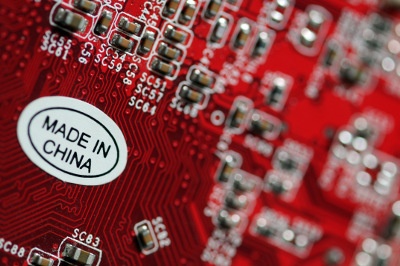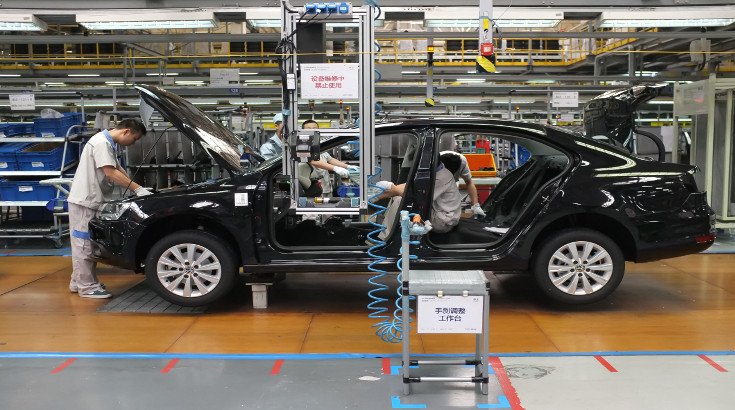Chinese product quality varies widely, ranging from top-tier items to low-cost goods with lesser standards. Quality largely depends on the manufacturer and price point.
Chinese products dominate global markets due to their affordability and diverse range. Many high-quality brands manufactured in China, ensuring strict quality controls. Low-cost goods may sometimes compromise on materials and durability. Consumers need to research and choose reputable brands to avoid poor-quality products.
Transparency and customer reviews help make informed decisions. The Chinese government has also been implementing stricter quality regulations. This aims to improve the overall standard of products. Understanding these factors can help consumers make better purchasing choices.

Credit: www.supplyia.com
Introduction To Chinese Products
Chinese products have become a global staple. They cover a vast array of categories, from electronics to clothing. Understanding the quality of these products is important for consumers worldwide.
Historical Context
China has a long history of manufacturing. The country started mass production during the industrial revolution. Factories grew rapidly, and so did production capabilities. Over the years, China became known for its ability to produce goods quickly and cheaply.
Global Market Influence
Chinese products dominate the global market. They are often more affordable than their counterparts. This affordability makes them popular with consumers. Quality has improved significantly over the years. Many top brands now manufacture their products in China.
| Aspect | Details |
|---|---|
| Electronics | High-quality, affordable, innovative |
| Clothing | Variety, fashionable, cost-effective |
| Household Goods | Durable, practical, budget-friendly |
- Electronics: Phones, laptops, gadgets
- Clothing: Apparel, accessories
- Household Goods: Kitchenware, furniture

Credit: www.intouch-quality.com
Common Myths
Many people hold misconceptions about Chinese product quality. These myths often stem from outdated or isolated incidents. Understanding these myths helps in making informed purchasing decisions.
Poor Quality Perception
One common myth is that all Chinese products are of poor quality. This is not true. China manufactures goods for many top brands worldwide. They follow strict quality standards for these products.
Chinese manufacturers have advanced technology and skilled workers. They produce high-quality items across various industries. Electronics, clothing, and toys made in China often meet international quality standards.
Many people think low prices mean low quality. But, Chinese companies can produce goods affordably due to economies of scale. This efficiency does not compromise quality.
Safety Concerns
Another myth is that Chinese products are not safe. This is a broad generalization. Like any country, China has both high-quality and low-quality manufacturers. Buyers need to choose products from reputable brands.
Chinese manufacturers must adhere to global safety standards. They follow regulations for electronics, toys, and food products. Many Chinese products undergo rigorous testing before reaching the market.
| Product Type | Safety Standards |
|---|---|
| Electronics | CE, FCC, RoHS |
| Toys | ASTM F963, EN71 |
| Food | HACCP, ISO 22000 |
Many Chinese products are certified by international bodies. This certification ensures they meet safety and quality standards. Smart buyers research and choose products with these certifications.
In conclusion, understanding these myths can lead to better buying decisions. Knowing the facts helps dispel common misconceptions about Chinese product quality.
Read More: Best Smartphones 2024: Unveiling Top Tech Marvels
Reality Check
The debate around Chinese product quality often stirs mixed emotions. While some raise concerns, others highlight improvements. Let’s dive into the reality check.
Quality Control Measures
Chinese manufacturers have stepped up their quality control measures. They follow global standards to ensure product reliability.
Here are some common measures:
- ISO certifications
- Regular inspections
- Quality audits
The ISO certifications are crucial. They ensure that products meet international standards. Factories also conduct regular inspections. This helps to catch defects early. Quality audits are done periodically. They check the overall quality of the production process.
Technological Advancements
China has made significant technological advancements in recent years. These advances have greatly enhanced product quality.
Some of the key advancements include:
- Automated production lines
- Artificial Intelligence (AI) integration
- Advanced testing equipment
Automated production lines reduce human error. They ensure consistency in product quality. AI integration helps in real-time monitoring. It identifies issues quickly. Factories use advanced testing equipment. This ensures that products meet high standards before they reach consumers.
Chinese products are improving. They are now known for their reliability and quality. This change is due to strict quality control and technological advancements.
High-quality Chinese Brands
Chinese brands have evolved significantly. Many now offer high-quality products. These brands compete globally. They focus on innovation and durability. This shift has changed perceptions about Chinese products. Let’s explore some of these high-quality Chinese brands.
Emerging Leaders
Several Chinese brands have emerged as leaders. They excel in various industries. Here are some notable examples:
- Xiaomi: Known for smartphones and smart devices. Xiaomi combines affordability with quality.
- Huawei: A giant in telecommunications. Huawei’s smartphones are renowned for their cameras.
- BYD: A leading electric vehicle manufacturer. BYD focuses on sustainability and innovation.
These brands emphasize research and development. They invest heavily in technology. This ensures they stay ahead of the competition. Their products often receive international acclaim.
Success Stories
Many Chinese brands have success stories worth mentioning. They have achieved global recognition. Here are a few:
- Lenovo: Acquired IBM’s PC division. Lenovo is now a top PC manufacturer.
- TikTok: A social media sensation. TikTok has millions of users worldwide.
- Alibaba: A leader in e-commerce. Alibaba’s platforms serve millions of businesses.
These brands have overcome challenges. They have earned trust through quality and innovation. Their success stories inspire other Chinese brands. They set a benchmark for excellence.
Consumer Experiences
Understanding Chinese product quality through consumer experiences offers valuable insights. These experiences reveal the strengths and weaknesses of these products. In this section, we dive into both positive testimonials and negative feedback from consumers.
Positive Testimonials
Many consumers share their positive experiences with Chinese products. These testimonials highlight the benefits and value for money.
- Affordable Pricing: Many customers appreciate the low cost of Chinese products. They get good quality at a fraction of the price.
- Innovative Features: Chinese brands often incorporate the latest technology. This innovation keeps consumers excited and loyal.
- Variety of Choices: Consumers enjoy a wide range of products. From electronics to clothing, there is something for everyone.
Here is a table summarizing positive consumer feedback:
| Aspect | Feedback |
|---|---|
| Price | Affordable for most consumers |
| Innovation | Latest technology used |
| Variety | Wide range of products |
Negative Feedback
Despite the positives, some consumers have faced issues. These experiences often revolve around certain recurring problems.
- Quality Control Issues: Some products fail to meet expectations. Inconsistent quality can lead to dissatisfaction.
- Durability Concerns: Some consumers report that products do not last long. Short lifespan affects overall satisfaction.
- Customer Service: Difficulty in reaching customer support is a common complaint. This hinders the resolution of issues.
Below is a table summarizing negative consumer feedback:
| Aspect | Feedback |
|---|---|
| Quality | Inconsistent and sometimes poor |
| Durability | Products do not last long |
| Customer Service | Difficult to reach and unhelpful |
Government Regulations
The Chinese government has strict regulations for product quality. These rules ensure that products meet high standards. They protect consumers and businesses alike.
Inspection Standards
The Chinese government sets inspection standards for all products. Inspectors check products at different stages. They check raw materials, production, and finished goods. This process ensures that only safe products reach consumers.
Inspectors use advanced tools and methods. They follow international guidelines. This helps maintain global trust in Chinese products.
Certification Processes
China has a clear certification process for products. Companies must get certificates before selling their products. These certificates prove that the product meets safety and quality standards.
There are different types of certifications. Common ones include:
- CCC (China Compulsory Certification): For electronics and machinery.
- CQC (China Quality Certification): For non-compulsory products.
- CFDA (China Food and Drug Administration): For food and medical products.
Each certification involves rigorous testing. This ensures the product is safe for use.
The certification process is transparent. Companies can track their application status online. This helps in timely approvals and market entry.
Comparing Global Standards
Understanding product quality standards across different regions is essential. Each region has its own rules. These rules help ensure products are safe and high-quality. Let’s dive into how Chinese products compare with US and EU standards.
Us Vs. China
The United States has strict product quality standards. Agencies like the FDA and CPSC oversee these standards. They ensure products are safe and reliable.
In China, quality control varies. Some manufacturers follow strict guidelines. Others may not meet these high standards. This inconsistency impacts product quality.
| Aspect | US Standards | China Standards |
|---|---|---|
| Regulatory Agencies | FDA, CPSC | Various, less centralized |
| Quality Control | Highly strict | Varies widely |
| Consumer Protection | High priority | Inconsistent |
Eu Vs. China
The European Union also has rigorous standards. Agencies like the CE mark ensure compliance. Products must meet safety, health, and environmental protection requirements.
In China, the standards can be different. Some products may not meet EU standards. This difference affects the product’s acceptance in the European market.
- CE Mark: A must for products in the EU.
- Safety Tests: Extensive and detailed in the EU.
- Environmental Protection: Stringent rules in the EU.
Chinese products often need additional testing. This ensures they meet EU standards.
Credit: www.quora.com
Future Of Chinese Manufacturing
The future of Chinese manufacturing looks bright. China aims to lead in product quality. The country is focusing on sustainability and innovation. This shift is transforming the industry.
Sustainability Efforts
China is making strong moves towards sustainability. Factories are reducing waste. They are using cleaner energy sources. This helps to protect the environment. Companies are following stricter regulations. This ensures that products are eco-friendly.
Here’s a quick look at some of the key efforts:
- Reduced Carbon Emissions: Factories are cutting down on emissions.
- Recycling Programs: More materials are being recycled.
- Green Energy: Solar and wind power are being used more.
Innovation Trends
Innovation is at the heart of Chinese manufacturing. Companies are adopting new technologies. These include automation and AI. These trends are improving product quality. They are also making production faster and cheaper.
Some notable innovation trends include:
- Automation: Machines are doing tasks faster and more precisely.
- Artificial Intelligence: AI helps in quality control.
- Smart Manufacturing: Factories are becoming smarter with IoT.
| Innovation | Benefits |
|---|---|
| Automation | Faster production, fewer errors |
| AI | Better quality control |
| Smart Manufacturing | Efficient and cost-effective |
Frequently Asked Questions
What Defines The Quality Of Chinese Products?
The quality of Chinese products depends on factors like manufacturing standards, materials used, and quality control processes. Companies often vary in their quality assurance practices.
Are Chinese Products Reliable For Everyday Use?
Many Chinese products are reliable and widely used globally. Quality varies by manufacturer, so research and reviews are crucial for informed decisions.
How Can I Ensure High-quality Chinese Products?
To ensure high-quality Chinese products, buy from reputable sellers, check reviews, and look for third-party certifications. Reliable brands usually maintain higher standards.
Why Are Chinese Products Often Cheaper?
Chinese products are often cheaper due to lower labor costs, efficient manufacturing, and economies of scale. This allows them to produce goods at lower prices.
Conclusion
Chinese product quality has significantly improved over the years. Consumers now find reliable and affordable options. With proper research, you can discover high-quality items that meet your needs. Embrace the variety and value Chinese products offer. Make informed choices and enjoy the benefits of quality products at competitive prices.
